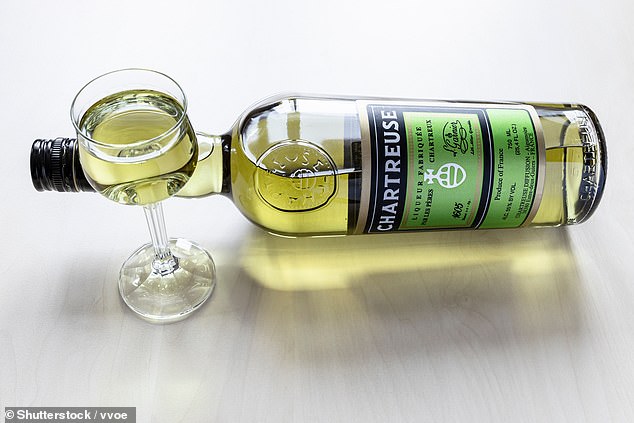It’s one of the world’s most mysterious drinks – and one of the most popular.
However, a global shortage of French herbal liqueur Chartreuse has been giving bartenders everywhere a particularly acute headache.
That’s because it’s a staple ingredient in lots of cocktails but has a unique taste, so direct replacements aren’t available.
What’s more – the recipe, a unique blend of herbs and plants – is a secret, known by only two silent monks. And they’ve announced that they won’t be upping production, preferring instead to concentrate on their monastical duties.
The duo are Carthusian monks from the Grande-Chartreuse monastery in France. The monks are silent except during communal prayer and recreation, so there’s no chance of getting them to share their secrets.
Chartreuse, which comes with a yellow or green hue, is based on a historic manuscript that was handed to the monks of the the Grande-Chartreuse monastery in 1605 by a military commander. The manuscript contained a recipe for a supposedly life-extending elixir and the monastery’s apothecary was charged with recreating it.
The official Chartreuse website says: ‘It took more than 150 years of research for the Carthusian monks to unravel the secret of the manuscript and fix the recipe.’
While their original concoction had a potent 69 per cent alcohol content, the final 1764 version that’s popular today is a slightly less powerful 55 per cent.

Monk’s the word: Chartreuse, a bartender favourite, is made at the Grande-Chartreuse monastery in France. And only two monks know the exact recipe

The secret Chartreuse formula is known only by Dom Benoit and Brother Jean-Jacques (above)

After the distillation process, the liquor is aged for several years before it is ‘analysed by the monks, who are the only ones to decide whether the liquor can be bottled and marketed’
Although the recipe remains secret, Chartreuse is thought to contain 130 plants and herbs.
Currently only Dom Benoit and Brother Jean-Jacques know the secret formula and the pair, deeply involved in the liquor’s production, are committed to ensuring its ingredients remain under wraps.
So what’s known about the production line?
Chartreuse Tourism reveals: ‘The 18 tons of plants needed each year are delivered to the Grande-Chartreuse Monastery in St Pierre de Chartreuse. In the “plant room”, the dried plants are sorted, crushed, weighed and mixed. Then they are delivered to the Voiron distillery in large numbered bags.’
After the distillation process, the liquor is aged for several years before it is ‘analysed by the monks, who are the only ones to decide whether the liquor can be bottled and marketed’.
While the Grande-Chartreuse Monastery is off-limits to visitors, tourists can visit the Caves de la Chartreuse, a museum and tasting room.
Lonely Planet explains: ‘The museum stops short of giving away the recipe but a tasting of the final products is allowed.’
Chartreuse recommends serving the liquor chilled or ‘over ice to discover all its flavour and aromatic power’.
Cocktail options include the Chartreuse Swizzle, which is blended with pineapple and lime, or the Green Chaud, which pairs the liquor with hot chocolate and whipped cream.
A guided tour of the museum costs €12 (£10/$12) and it’s recommended that visitors book tickets in advance.

The Grande-Chartreuse Monastery (above) is off-limits to visitors, but they can visit the Caves de la Chartreuse, a museum and tasting room
This article was originally published by a www.dailymail.co.uk . Read the Original article here. .


